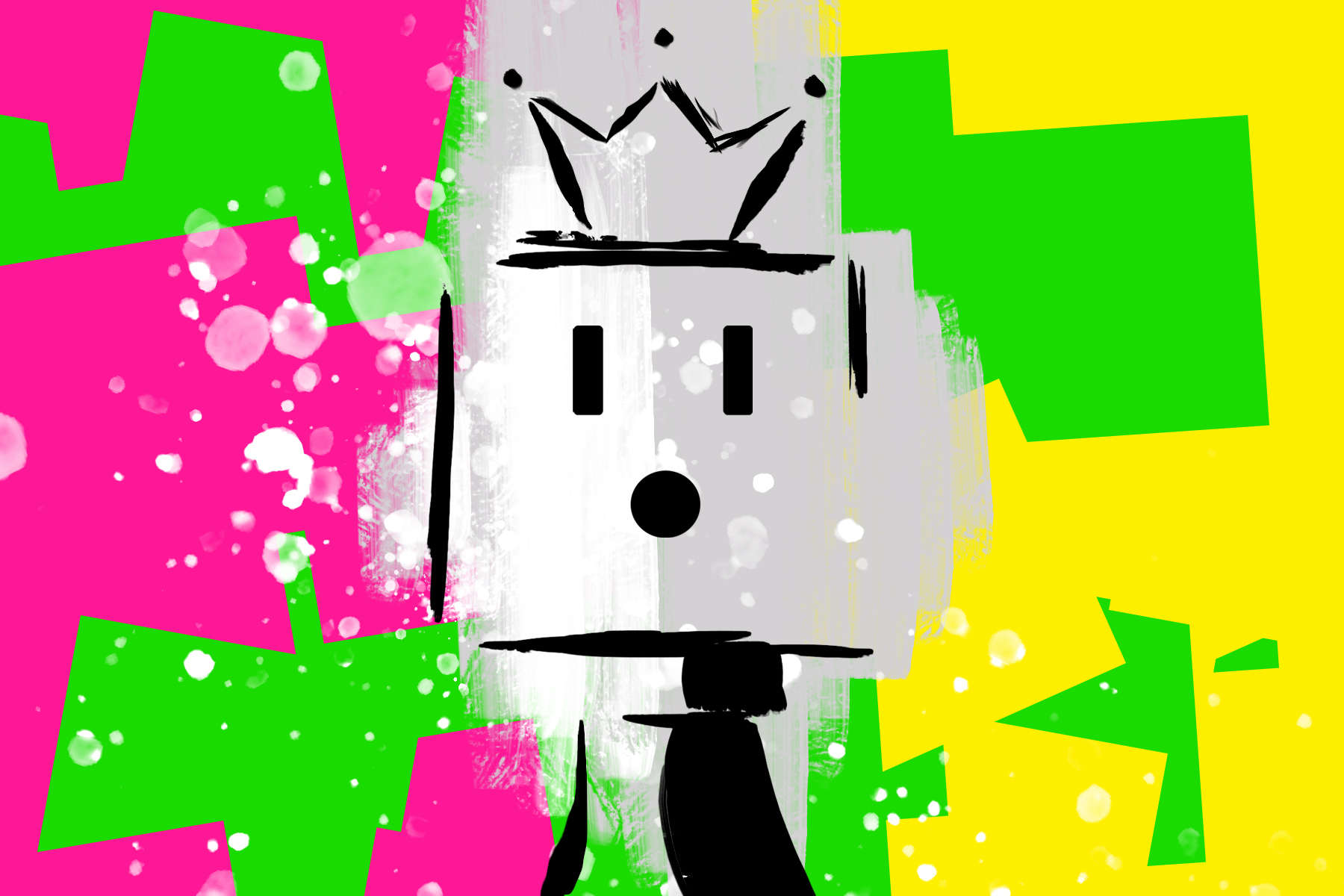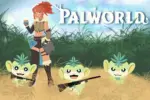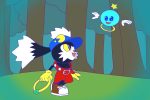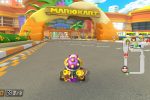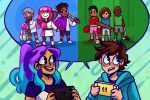Nintendo Land isn’t exactly what you’d expect from a theme park video game. Although there are plenty of guests in the park, with or without Miiverse, there aren’t any stalls in the park. In the beginning, the park is essentially just a platform in the middle of the sky, except for the gates that lead to each attraction.
Don’t be fooled though; the park becomes surprisingly customizable the more you play. The one real landmark is the Nintendo Land tower, known as Central Tower. There, you drop coins you earn from the attractions so you can unlock rewards and decorate the park. While the vast majority of these rewards are interactive replicas of objects, scenery and creatures inside the attractions, there are a handful of switches that, when pressed, produce a variety of effects.
The sun switch changes the time of day in the park: day, evening or night. Each time of day also plays a unique adaptation of the Nintendo Land theme. The box switch turns all the rewards into question mark boxes, including Central Tower and the Nintendo Land train.
The purple switch makes your Mii gigantic, allowing you to knock away anything in your path. The blue switch raises all the rewards into the sky, where they revolve around the park like a carousel.
They’re about as wacky as they sound, but they do make the park lively in their own silly way. One of the prizes, the Jukebox, allows you to change the music you hear around the park. The more you play, the more tracks you unlock.
These things may sound trivial, but they do illustrate how dependent the park is on gameplay and how it evolves the more coins you earn. It’s really all the player has to look forward to beyond the attractions themselves.
After all, the only ride in the park is the Nintendo Land train; the train whisks you skyward to the Nintendo Land tour, which is essentially a rush of all the attractions in the game. Sounds exciting, right? Well, it certainly would be, if multiple players weren’t needed to enjoy it. This highlights the glaring issue with the game: the player requirements.
Multiplayer Roadblocks in Nintendo Land
While only three of the 12 attractions are exclusively multiplayer (the game calls them competitive attractions), it makes for an incomplete experience for players who don’t have the luxury of other people to play with. The sad part is, it wasn’t even necessary to make the competitive attractions exclusively multiplayer. Computer players, or COM players, would have been more than adequate to accommodate a lack of other players.
One of these attractions, Mario Chase, involves the GamePad-holder playing as Mario and running away from the Toads (the Wii remote players) and their COM-controlled Yoshi carts. The Yoshi carts chase Mario down and stun him with tongue punch attacks, but Mario can only lose if he’s tackled by a Toad.
It’s even worse that the effort Nintendo put into the attraction is made eminently clear when you play it. One level includes mud that slows the characters down, and there are bridges between the mud that periodically appear and disappear, adding to the unpredictability. There are also blue ramps that players can’t run up even when Mario’s powered up with Starman.
To be fair, it would have been more work to swap the TV gameplay the Toads use for Mario in the event of a single-player game, but that extra effort would have been worth it to make the experience available for single-player mode. The Toads could have been controlled by COMs just like the Yoshi carts. The GamePad could also be used to track the Yoshi carts just like the normal game.
The Luigi’s Ghost Mansion attraction is a bit trickier to justify accommodating a single-player mode, but it would have been manageable. The GamePad holder plays as the ghost, and the Wii Remote holders are ghost trackers whose goal is to shine their flashlight on the ghost and whittle its health down to zero. The ghost is invisible on the TV, but it can be seen and controlled on the GamePad screen.
The easy answer for a single-player ghost mansion experience is to have the four ghost trackers be COM-controlled — some of them already are if there aren’t four Wii Remote players. The GamePad player could still try to evade the COM trackers; better yet, the single player could have been Luigi, and the player could have tried to avoid COM-controlled ghosts on the way to the mansion entrance in a sort of first-person maze survival experience. The player’s flashlight could even stun the ghost if they make a mistake, and the developers could have included a time limit to raise the stakes even further. That way, Luigi’s Ghost Mansion could have included a single-player and multiplayer experience, both distinct from each other.
The Animal Crossing: Sweet Day attraction could have also accommodated a single-player experience. The Wii Remote players control animals gathering candy to return to a base while avoiding two gatekeepers. One is controlled with the left GamePad control stick and the other is controlled with the right GamePad control stick. The animal has three lives, and one is lost every time a gatekeeper touches it. If the animal loses all three lives, the gatekeepers win. COM-controlled gatekeepers and a GamePad-operated animal for the human player would have accommodated a single player.
What About Single-Player Attractions?
An argument could be made that the exclusively single-player attractions are equally limiting. There are six of them, which makes up half the game, but it’s not the same. These games are conceptually designed for a single-player experience. For instance, Donkey Kong’s Crash Course can only be navigated by tilting the GamePad, and triggers are used to power certain aspects of the course, some of which are wheels that can’t be controlled with a Wii Remote — at least not as well.
Trying to hold the Wii Remote vertically and tilt it a certain way doesn’t have the stable feel needed to master the course, and it would be very difficult to integrate the course controls comfortably. And multiple players navigating the course would just make the gameplay messy. Having each player cover four corners might have worked, but it would have just complicated the gameplay further.
At worst, players could take turns and pass the GamePad. That way, each player would still be able to experience each attraction. Other attractions, like Metroid Blast, use multiplayer excellently. The GamePad player uses the gunship, and other players use Wii Remotes and Nunchuks to don Power Suits and blast enemies on foot. They can also use the Grapple Beam to hang from under the gunship and blast enemies with the same rapid-fire capabilities as the rapid-fire helmet.
Conclusion
By limiting competitive attractions to exclusively multiplayer modes and not taking steps to ensure just one player could enjoy them on their own, it is impossible for single players to get the full experience of Nintendo Land. Naturally, this can lead to a lot of disappointed fans who could have expected more. It doesn’t help that two of the three competitive attractions are based on Mario and Luigi, who are two of the most popular icons in all of Nintendo and gaming at large. Animal Crossing has its fair share of fans as well.
Fragmented as the experience is for single players, Nintendo Land is still a great game. The attractions are memorable, very replayable and can spark interest in Nintendo’s game series. Any fan of Nintendo is bound to have a good time in Nintendo Land.


